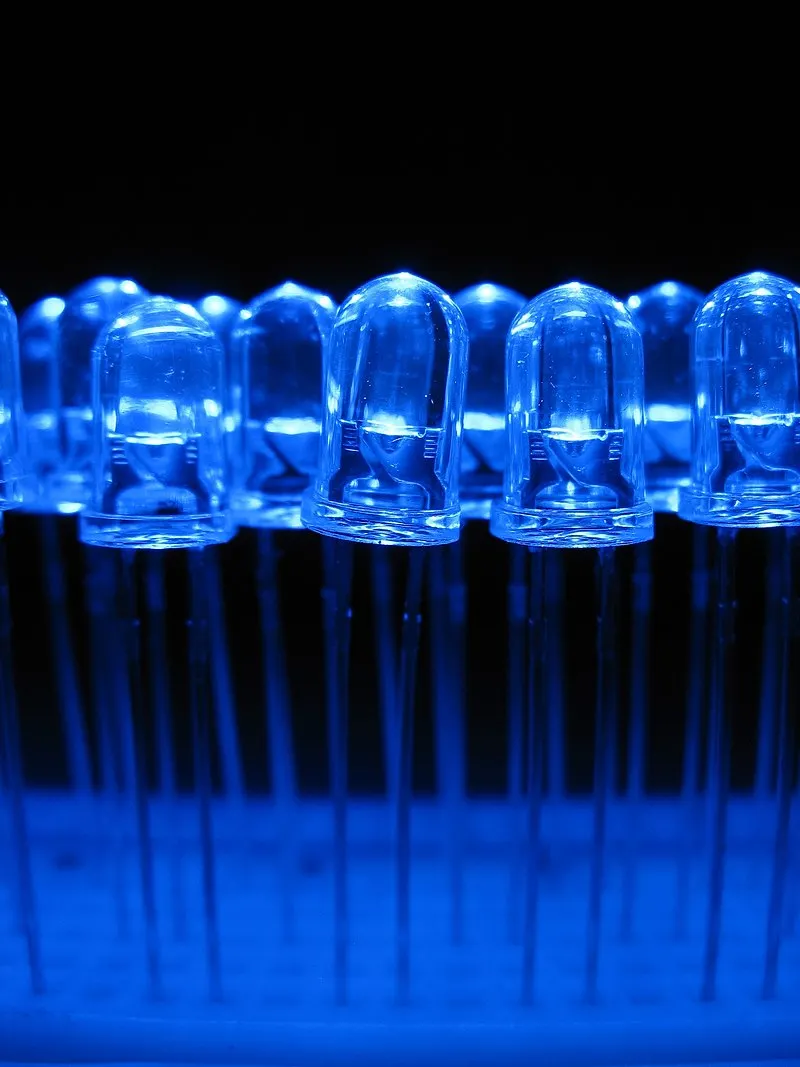Ana-Marija Nedić

Contact: amnedic AT umn DOT edu
Connect on LinkedIn
Codes repositories on GitHub
List of publications on Google Scholar
Maybe useful:
∙ Resources for young researchers
And some fun topics:
∙ Why is magnetic field denoted as ‘B’?
∙ How would you fit these data?
∙ Why a Nobel for blue LEDs?
∙ The times when Einstein blundered
Why blue LED earned a Nobel Prize if reds and greens already existed for decades?
Red and green LEDs had been around for decades, quietly powering early electronic devices. But a bright blue LED remained elusive until 1989, when Shuji Nakamura, Hiroshi Amano, and Isamu Akasaki cracked the problem, earning them the 2014 Nobel Prize in Physics. Blue LEDs completed the RGB spectrum, making full-color LED displays and white LEDs possible. As the Nobel committee put it: “Incandescent light bulbs lit the 20th century; the 21st century will be lit by LED lamps.”
But what was so special about the blue LED that its discovery deserved a Nobel prize?

The story of the blue LED is one of perseverance, ingenuity, and a dash of luck.
A history of LEDs
A light-emitting diode (LED) is a semiconductor device that emits light when a current flows through it. The first commercially relevant semiconductor was silicon carbide (SiC). In the mid-1920s, self-educated Russian scientist Oleg Losov was the first to look deeply into the spectrum of light emission from SiC. Picking up on his work, Kurt Lehovec, Czech by birth, found in 1952 that adding different impurities and tuning their amount could change the light from blue to greenish-yellow and to pale yellow, the process now known as doping the semiconductor. A semiconductor doped with electron-rich impurities is called an n-type semiconductor, where n stands for negative charge. Similarly, a semiconductor enriched with electron-poor impurities is called a p-type semiconductor. A p–n junction is a boundary between p-type and n-type semiconductors, and an LED is a particular p-n junction that emits light.
The first infra-red LEDs at low temperatures were discovered in 1951 by a group of scientists at Bell Labs in p-n junctions of germanium and silicon. A prospective new material for emitting photons was gallium arsenide (GaAs). The first GaAs LED was discovered accidentally in 1961 by scientists working for Texas Instruments on a laser diode. It was an infra-red LED, so it had no practical use beyond the visible spectrum.
At General Electric, American engineer Nick Holonyak, Jr. was experimenting with the same material. After seeing their demonstration, he created the first visible red LED in 1962 using a compound semiconductor device combining gallium phosphide (GaP) and gallium arsenide (GaAs). He is often called the “father of the LED.” Holonyak later joined the University of Illinois, where he supervised aspiring researcher George Crawford. After completing his Ph.D., Crawford was hired by the Monsanto Company, and in 1968 Monsanto became the first to mass-produce affordable visible LEDs based on GaAs, primarily for electronic calculators, digital watches, and digital clocks.
In the mid-1970s, pure gallium phosphide (GaP) was used to make LEDs that produced green light. Another critical goal was achieving good light intensity. The first generation of super-bright red, yellow, and green LEDs came in the early 1980s. By 1987, green and red LEDs were bright enough to replace incandescent bulbs in vehicle brake lights and traffic signals, marking the first time LEDs displaced incandescent bulbs in a lighting application.
Even though color television in North America did not outsell black-and-white TVs until the early 1970s, a cathode-ray color TV was introduced in the US as early as 1953. After success with GaAs and GaP LEDs, it was expected in the late 1960s that LEDs made of gallium nitride (GaN) would emit blue light, based on nitrogen’s position in the periodic table, just above phosphorus and arsenic. The Radio Corporation of America (RCA) saw an opportunity to replace bulky cathode-ray tubes with LED-based screens. Americans James Tietjen and Herbert Maruska at RCA worked on synthesizing GaN. While producing n-type GaN became feasible, a p-type semiconductor was still needed for a functional p-n junction. With practically unlimited funding, RCA hired well-known material scientists Jacques Pankove and Edward Miller to work on blue LEDs. In 1972, RCA engineers produced a faint blue LED and patented it two years later. They had hoped these LEDs could finally complete the RGB spectrum for displays, but the light was too dim, and the financially struggling company cut funding for blue LED research in 1974. Although GaN samples had been made as early as 1969, the critical challenge of producing p-type GaN for a working p-n junction remained unsolved, leaving bright blue LEDs a tantalizing dream for decades.
Across the Pacific, Japanese engineer and physicist Isamu Akasaki began working on GaN in the late 1960s at Matsushita Research Institute Tokyo. In 1981 he joined Nagoya University and, along with his graduate student Hiroshi Amano, developed a method for p-type doping GaN. They finally produced p-type GaN and, in 1989, a p-n junction emitting high-power blue light. Engineer Shuji Nakamura at Nichia built on their work to develop a practical method for mass production. By 1993, Nakamura’s blue LEDs were 100 times brighter than previous SiC LEDs, reaching 2.7% efficiency, and became the basis for all commercial blue LEDs and laser diodes today.
The impact of blue LEDs was transformative. Today, nearly all LED devices, from smartphone screens and televisions to streetlights and car headlights, still rely on the p-n junction in GaN. Nichia remains the world’s largest supplier of LEDs.